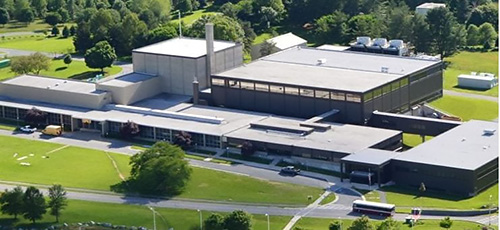The Nuclear Regulatory Commission has authorized the restart of a test reactor at the National Institute of Standards and Technology, in Gaithersburg, Md. The reactor was shut down in February 2021 when a fuel element became damaged during startup and approach to full power. The incident violated the NRC’s fuel cladding temperature safety limit, although public health and safety were not affected, according to the agency.
The reactor is located at NIST’s Center for Neutron Research.

NIST's Center for Neutron Research in Gaithersburg, Md. (Photo: NRC)
Technical evaluation report: The NRC’s authorization was conveyed to NIST through a letter dated March 9, 2023, and issued by Andrea Veil, director of the NRC's Office of Nuclear Reactor Regulation. The letter stated, “Based on its review documented in the [technical evaluation report], the NRC staff has determined that the results of the licensee’s review regarding the cause of the February 3, 2021, event and the basis for corrective action taken or committed to be taken to preclude recurrence of the exceedance of the safety limit, demonstrate that restart would be in accordance with the facility’s license and NRC regulations."
The NRC concluded, therefore, that the resumption of operation of the research reactor would not be detrimental to the common defense and security or to the health and safety of the public.
The NRC’s technical evaluation report included reviews of the reactor’s systems and NIST corrective actions and NRC inspections. The corrective actions addressed such issues as NIST’s fuel handling and management activities, safety culture, and emergency response procedures. The NRC also approved certain amendments to the reactor’s license that NIST had requested.
Director’s statement: Veil elaborated on the NRC’s decision in a March 10 statement, explaining, “We’ve reached this decision after extensive review of the event, NIST’s corrective actions, and additional work the facility has done to ensure safe operation. We’re satisfied this research facility’s important systems and components are ready to go, and we’re satisfied the reactor staff are ready to carry out improved procedures for maintaining safety. We’ll continue our increased oversight of the facility and its ongoing corrective actions.”